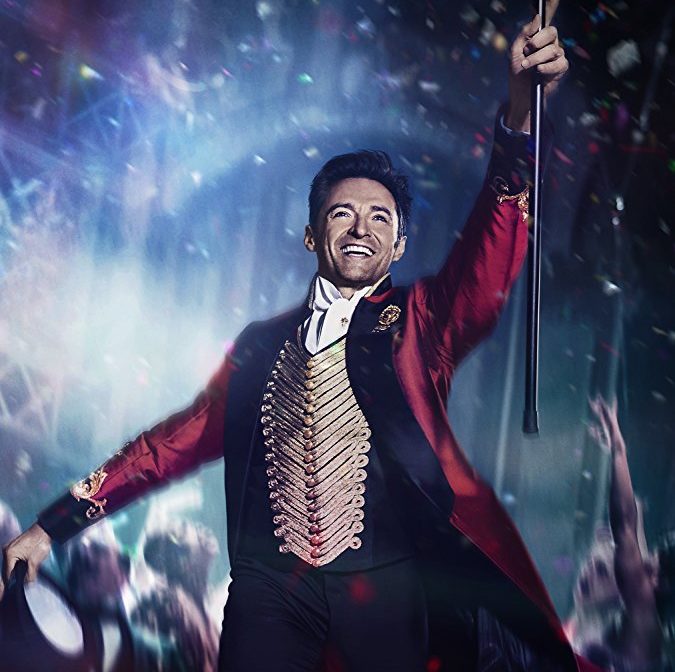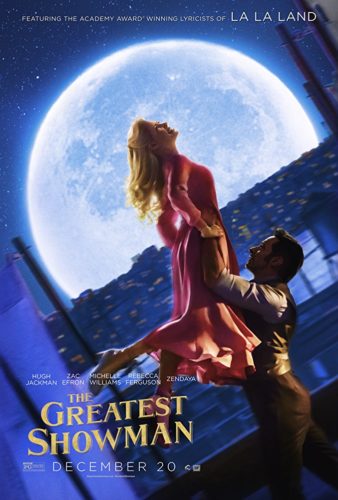

The many movies that contemplate men experiencing work/dream/family conflicts have not, generally, been helpful to viewers—men or otherwise. This category of film is vast, of course, but they almost always posit that fathers who sincerely return their gaze to family in Act 3 will achieve a previously inconceivable version of whatever they were pursuing to their children’s detriment in Act 1. It’s a bit like the pop theology “let go [of yourdesires/needs/wants] and let God [lavishly reward your moment of selflessness with all the riches and favors you’ve ever wanted].” If I can just trick myself into believing that my family’s needs are more important than my own, then I will receive financial and creative fulfillment.
Watching The Greatest Showman has solved for me the puzzle of why such films so consistently fail to inspire or even instruct: the family is too often presented as an obstacle to or prerequisite for The Dream. The family is rarely part of the dream. The beginning scenes in The Greatest Showman, though, show how P.T. Barnum’s (Hugh Jackman) dreams of rising above his father’s poverty and courting an upper-class beauty named Charity (Michelle Williams) are intertwined. The surprisingly complex story that follows a brief P.T. + Charity childhood-to-adulthood-to-marriage-to-parenthood montage follows from the premise that P.T. dreams about a successful life with the girl, not despite her. The lack of a specific ambition in these early scenes is actually part of the appeal for me. P.T. Barnum, as young Phineas, just wanted to give Charity a beautiful life, and he craved the respect aggressively denied to him by her father, a petulant and abusive aristocrat.
After growing up around Charity, marrying her, and toiling in obscurity through most of their two girls’ childhoods, Barnum tricks a bank into loaning him the startup funds for a macabre wax/taxidermy museum. The venture promptly flops and doesn’t recover until it is changed into a theater of misfits, most notably bearded lady Lettie Lutz (Keala Settle), little person Tom Thumb (Sam Humphrey), black acrobat Anne Wheeler (Zendaya), and junior partner/aristocracy reject Phillip Carlyle (Zac Efron). The success, freedom, and empowerment for all concerned is threatened by an admittedly conventional Icarian rise—audience with Queen Victoria, import of European opera singer Jenny Lind (Rebecca Ferguson)—followed by a devastating and nearly tragic fall. Forgiveness and redemption await Barnum under the big top and in the seats of a ballet recital, which viewers of a certain age knew from the start (for the younger viewers: the Barnum name was part of your parent’s childhood, too).
The pop-rock anthems—sung with intensity and earnestness—and accompanying choreography dazzle and entertain, and they ground the viewer’s understanding of what is really important in Barnum’s success, even as he loses perspective. The Greatest Showman is a straightforward exposition on the beauty of all people, full stop, and that is best seen in the elaborate songs featuring an actually diverse cast—in addition to the aforementioned characters, there are a pair of Siamese twins, a man with hornlike growths on his temples, and a boy with long hair covering his face and all visible skin (“Dog Boy”). It is dangerous to put people with any type of physical irregularity vs. the Hollywood norm on film; the line between empowerment and exploitation is very easily (and repeatedly) crossed. The performances in The Greatest Showman avoid exploitation via the undeniable stage presence of all the actors, most especially better-be-an-Oscar-contender Settle, the bearded lady and leader of the Barnum circus cast members. That is, the film avoids exploitation by presuming that no one in the shot had any reason to hide. Which should be the norm for all people, everywhere. Which is sort of the point of the movie.
The standard narrative would have been to show Barnum cynically recruiting people for profit and then discovering their humanity and beauty. Rejecting that tired formula entirely, Barnum always believed in his cast. Indeed, the early scenes underscore this with a touching moment when Phineas, as a starving orphan child, is given an apple by a cloaked woman with a facial deformity. Later, when his museum fails, his daughters tell him that it would do better with something living. The book Tom Thumb, conveniently on the table, kindles the search for misunderstood, glorious, and engaging people to fill out his circus cast. Their eventual forgiveness therefore makes sense, because he first poured genuine love into each of them. He empowers them without irony or deception, which makes his selfish turn toward respectability devastating and his final redemption complete.
But the love that made all this possible started at the beginning, between a boy and a girl and then a man and a woman. The Barnums’ love story grounds the whole film in unconditional love. As in all those other movies about dads and dreams, faithfulness to his family commitment brings P.T. back home to rebuild the life he nearly wrecks. Unlike most of those movies, though, the solution isn’t just to end the midlife crisis. Instead, Barnum seeks and receives forgiveness, rebuilding the bonds forged by his long courtship of Charity and his gleeful recruitment of outcast performers.
I imagine that many critics will balk at the uncomplicated sincerity of all this love-infused singing and dancing and trapezing. Certainly, raising a family and being an ally to oppressed peoples are not as simple as a song and a dance and Hamiltonesque orchestration. Even as I was moved by the beauty of this film, I was aware of my own very real shortcomings in the love and care for other people. I am aware, for example, that my personal identification with Barnum’s personal development reflects the privilege of never having to experience the alienation that the cast members feel–or for that matter, the degradation that Barnum himself felt as an impoverished orphan. I am therefore not telling you that The Greatest Showman provides any sort of solution to society’s general or one’s personal struggle with seeing Christ in other people. I am recommending it here because The Greatest Showman is a glorious two-ish hours where you can inhabit a world as small as a big top and fall in love with unconditional love over and over again.

COMMENTS
Leave a Reply












